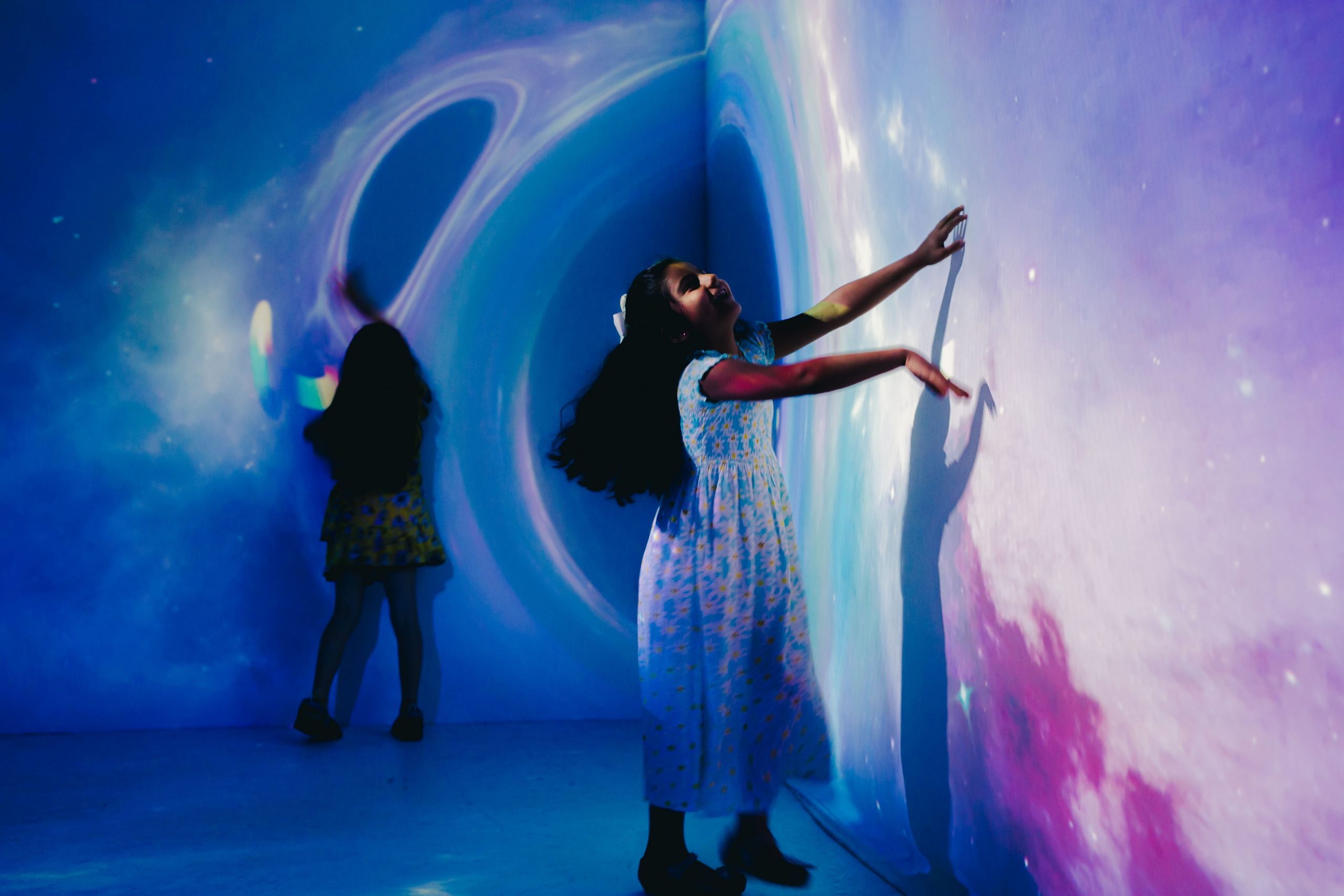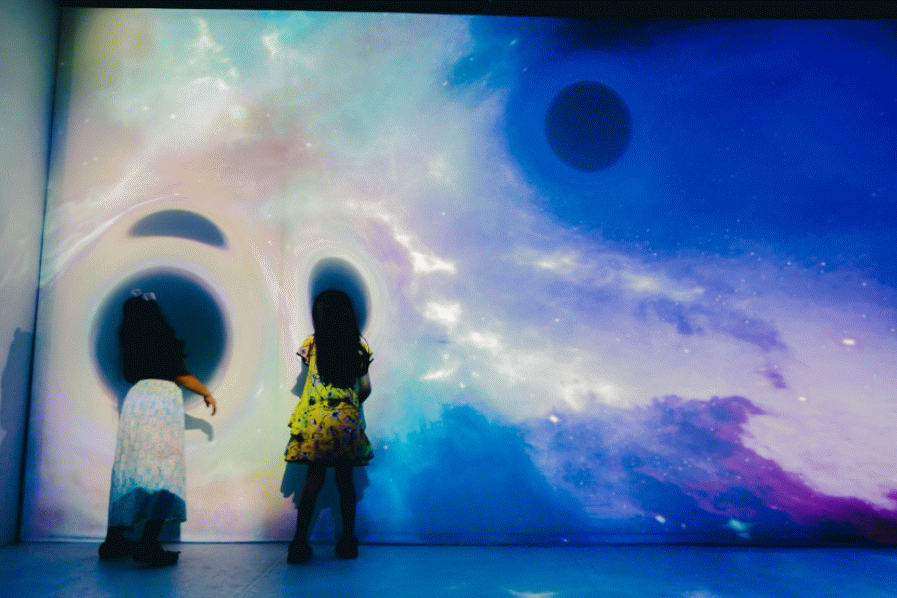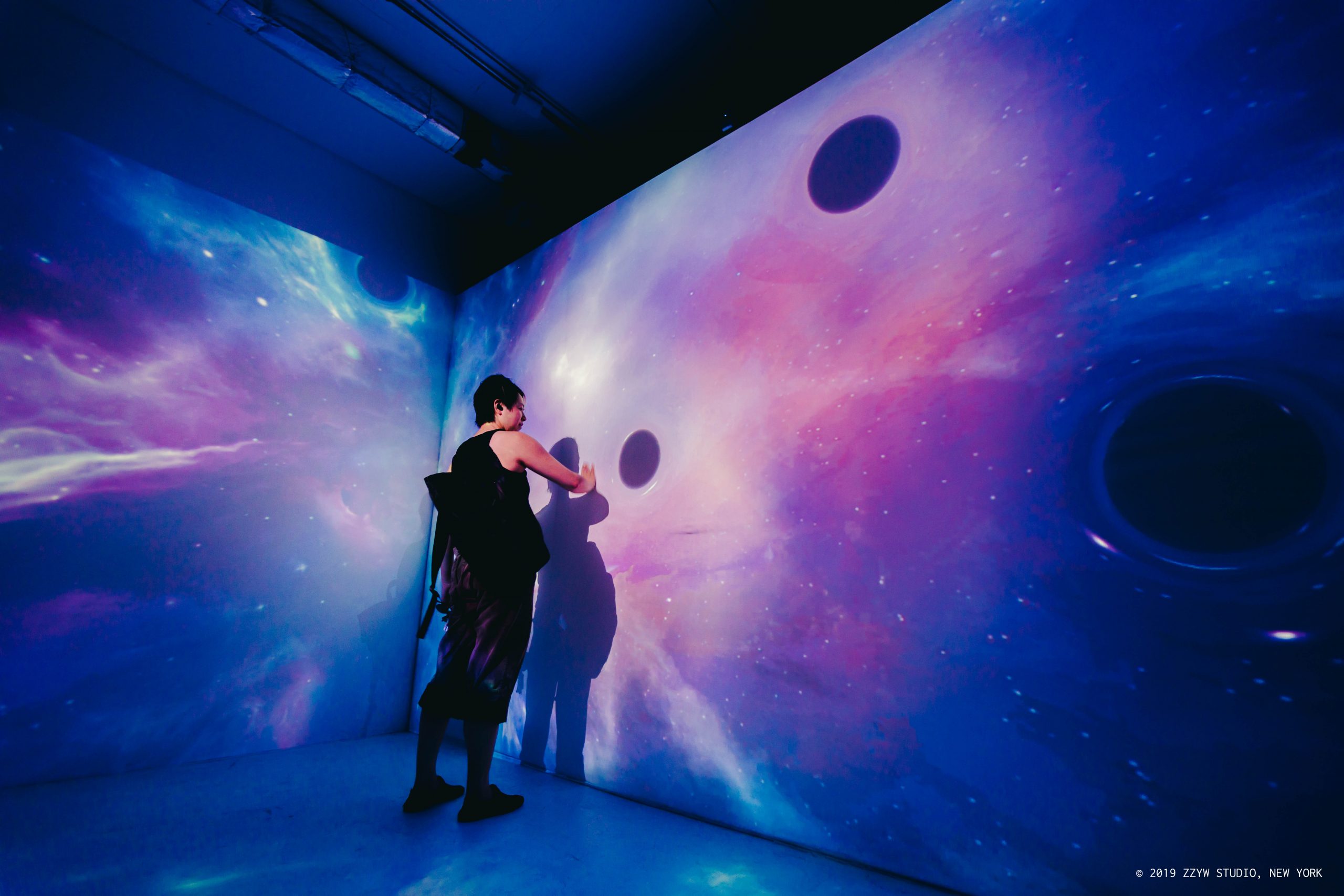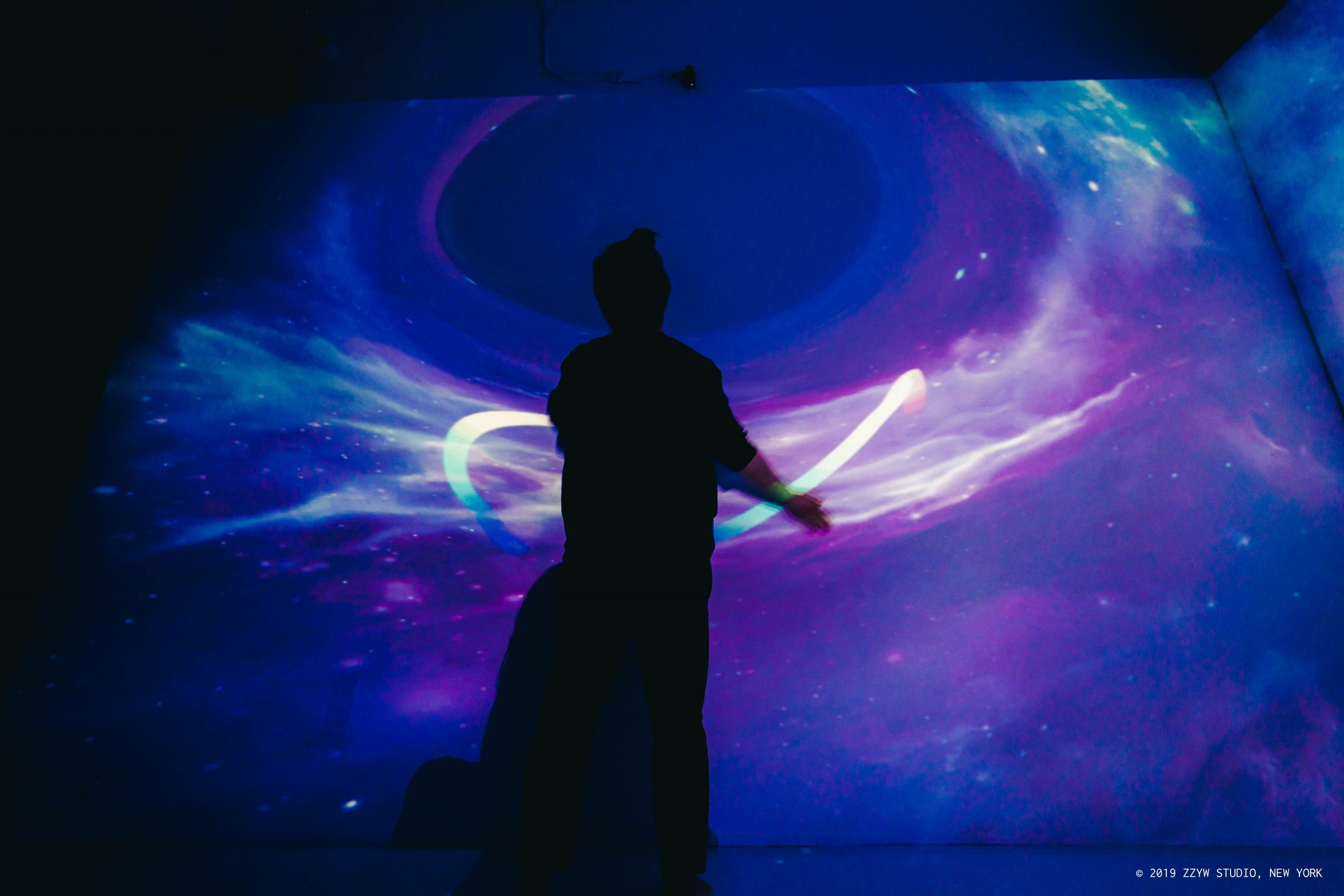Gravitational Wave
Gravitational Wave is an interactive simulation that reenacts relativity and radiant energy theories in a playful and immersive way. The installation is composed of an interstellar system spread out across two adjacent wall spaces and the floor. Audiences can use their hands to bring forth new black holes. When two black holes get close to each other, they form a binary black hole system. A phenomenon that has been theorized for decades and finally observed and announced in February 2016. A binary black hole system constantly emits gravitational waves while each black hole orbits around the other. In the end, the black holes would merge, and trigger the strongest known sources of gravitational waves in the Universe.
Gravitational Wave encourages a playful and intuitive approach to interface with a complex scientific phenomenon. Audiences interact with poetic and immersive environments simulated based on astrophysics laws, which invites a personal and intimate relationship with the complex spacetime humanity occupies.





